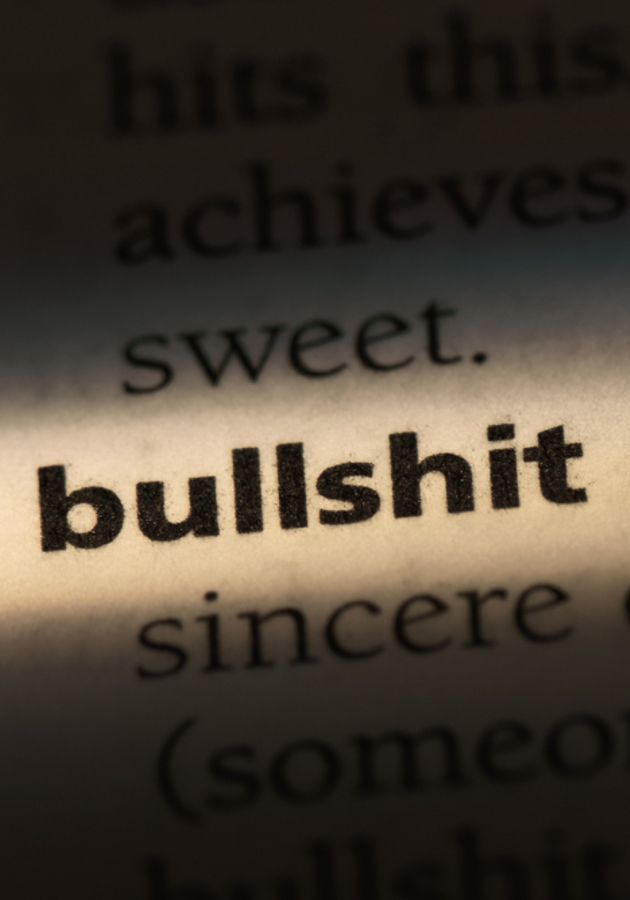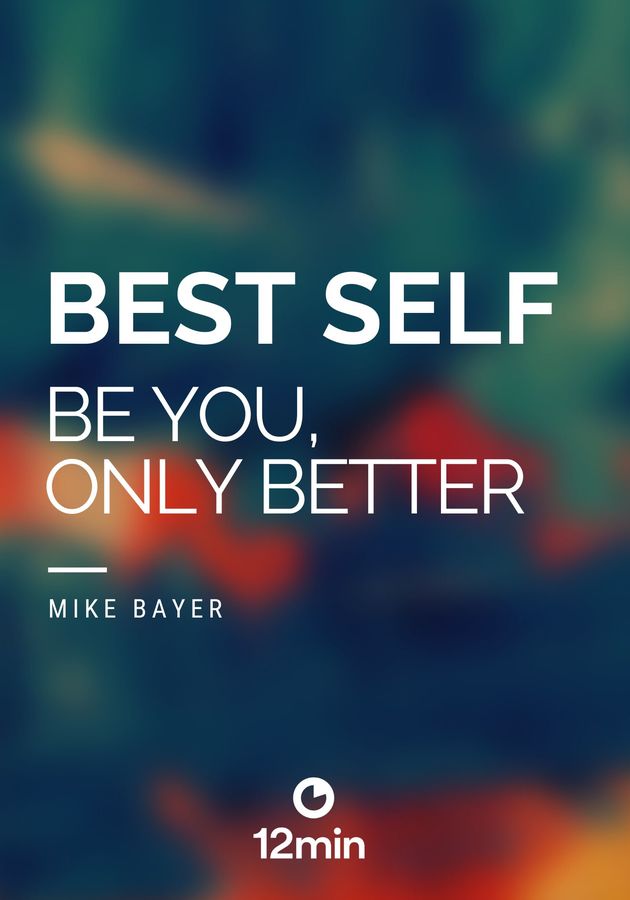An award-winning Canadian American TV producer and documentary film director, Brant Pinvidic has so far sold over 300 movie and television projects and is the creator of such well-known shows as “Bar Rescue” and “Extreme Weight Loss.”
In his first book, “The 3-Minute Rule,” he explains – in some detail – the underlying secret of his successful business pitches, everything from their general template through the timing to the sweet little tips and tricks.
Get ready to learn how to convey your information to others, so they understand it the way you do – so that you can finally sell that product, business, project, or service you really know is worth buying!
The 3-minute rule
Over the past two decades, Microsoft researchers in Canada surveyed 2,000 participants and, using electroencephalograms (EEGs), actively studied the brain of 112 others. What they discovered was something rather expected: since the beginning of the mobile revolution, the human average attention span dropped from 12 to 8.2 seconds! Now, you could say that humans currently have the attention span of goldfish, but that would be an offense to our favorite sea pets: amazingly enough, their average attention stands at about 9 seconds – that is, almost a full second longer!
“It’s not that we’re all dumbed-down, mindless, distracted zombies,” notifies us Pinvidic, “it’s actually just the opposite.” The truth is that “the proliferation of technology and the ability to get unlimited information instantly” has rapidly evolved our brain into that of a “hyper-savvy consumer” – namely, one that is capable of focusing both more intensely and more efficiently. Back in the day when there was no Google, people could listen to one talking for hours, but, nowadays, most of them have zero tolerance for “long-winded explanations, exhaustive chatter, or linguistic sales tactics.” The reason? Well, they want the gist of it, the kernel, the bare essence stripped of all the extras and extravagances. Simply put, they want the information – and they want it “quick, clear, and concise.”
So, it’s a pretty dangerous misconception the common belief that, a presentation needs to have “flair, pageantry, and creative language to cut through the clutter and get noticed” to be successful. Quite the opposite: it should have nothing of that. Instead, it should be a simple, clear-cut presentation that conveys information effectively. “Every time you make a pitch, presentation, or proposal to try to influence anyone to do anything,” warns Pinvidic, “your audience’s first impression will be fully formed in less than three minutes. That ‘yes’ or ‘no’ is already in their heads. It’s not your fault. That’s just how people are.”
Three minutes? But that’s just not enough, you think: your business, product, or service is way too complicated to explain it in three minutes! Well, it’s not your choice: three minutes is “not only a benchmark for condensing the valuable elements of a proposal and streamlining a presentation, but it also serves to engage an audience to where they begin their decision-making process.” In other words, “if you can’t distill your ideas down to three minutes or less, they will begin to make a decision without all the pertinent information.” And if there’s one thing you don’t like, it’s certainly allowing your audience to make a decision without knowing everything it needs to know beforehand.
WHAC your story
They say that timing is everything, but it is not: merely knowing how long your presentation should be is just the beginning of making a successful presentation. The next step – or rather steps – is learning how to structure your presentation effectively so that it includes all the important and relevant information inside the three, so to say, evolution-allotted minutes.
Now, of course, the exact details will vary depending on your audience and your topic, but there is a general template to hit a home run in sales, one that Pinvidic playfully condenses in no more than three words: whac your story! Perhaps we should have said four letters instead of three words because the essence of a successful presentation hides beneath the “whac” of that phrase, an acronym that stands for the four questions you need to have answered by the end of your pitch:
- W or What is it? What is the biggest need that your product or startup fills? What problem does it solve? What makes it unique? Does your presentation address these questions?
- H or How does it work? Does your presentation explain why the elements of your offer are valuable or important? Does it explain how your product works or how you achieve your goal? How can you deliver on your promise?
- A or Are you sure? Is your information backed by a fact or a figure? Does your presentation prove something? Has a third party verified your claims? What have you said that someone might not believe?
- C or Can you do it? What have you done that’s similar that proves you can do it? How have you trained for this? Do you have the necessary connections? What are the repercussions of underperformance?
Timing your WHAC
Now, of course, all of these questions are not equally important. Some deserve a few sentences, while others should be summed up in just a few words. However, when you have only 3 minutes of your audience’s attention at your disposal, you are not allowed to make the wrong choice and waste most of your answers at the wrong questions. Consequently, each section of the WHAC filter has a specific value in the overall presentation and should have different time portions:
- W—What is it? 50% or 1 minute, 30 seconds. Half of your presentation should deal with your core concept and the fundamental elements of your pitch. Nothing is more important than making your audience understand this: do that, and you’ve won half of the battle.
- H—How does it work? 30% or 1 minute. You’ve heard that right: the “what” and the “how” make up for 80% of the audience’s buy-in decision! If they understand the concept and the value you’ve laid out, they will be eager to verify and engage. They will be looking for this to work out.
- A—Are you sure? 15% or about 20 seconds. Most people tend to start with the facts and figures, but these should only back up or verify your offering and should come only after. However, even though a small piece of the puzzle – the facts and figures are an important one because once your audience knows what you are about to and how you plan to achieve it, it will naturally want verification that it is a feasible plan.
- C—Can you do it? 5% or about 10 seconds. Believe it or not, can you do what you offer to do, is the thing your audience is interested in the least: it’s the idea that sells, and there are always ways to bring it to completion even if you are not the right guy to do that. Depending on the value you’ve created in the first 95% of your presentation, the answer to this question can be almost inconsequential. Generally, the stronger your information and value are, the less important the “Can you do it?” part becomes.
Conceptualize, Contextualize, Actualize
The WHAC system works so well as a general template because it covers all the bases, and it does so in a consequential manner. No matter how much you enjoy movies such as “Pulp Fiction” or “The Sixth Sense,” they are the exception: for every movie or TV show that succeeds by breaking the rules, there are at least one thousand that find success by sticking with the pattern. So, don’t try to Tarantino or Shyamalan your presentation by being clever or nonchronological, by building to a big reveal or trying to misdirect and surprise. “You want your audience to go ‘and then’ all the way through,” advises Pinvidic. “You want them to feel like they know how it will end. You want them to hope for the resolution they desire. You want your conclusion to be their conclusion.”
Your 3-minute pitch should be an “and then” story: straight, linear, and clear. And it should be all about the story and barely anything about the style, for the simple reason that, in sales, story trumps style. Hence, the need to simplify your message and structure it in a certain way: the objective is to feed your information in easily comprehensible statements and naturally graspable stages that would allow your audience to form a core understanding of the value of the proposition. Effectively, “you want them to see your proposal the way you see your proposal… they must conceptualize your idea, contextualize how it will benefit them, and then actualize it with potential engagement or further interest.”
This is why facts and figures are the wrong way to start your presentation. They need context to mean anything, and context requires a foundation of understanding, which in turn relies on a solid premise. And that’s why you should start with the “what” and the “how” to conceptualize and explain your offering. Next, your job is to contextualize it via the “are you sure?” element that engages and verifies details. Finally, you can actualize your pitch with the “can you do it?” part of the WHAC that aims to encourage the buy-in or opt-out by drawing attention to your credentials to be the driving force of your project.
Improving your WHAC
In addition to the four questions – or, depending on your project, as part of them – there are a few other 3-sentence elements you should include in your presentation:
- The opening. This, of course, comes even before the “what.” Expectedly, it can be summed up in another interrogative pronoun, the all-important one “why?” The answer should be your reason for being. In essence, in your intro, you should tell your audience how you came to be involved with your idea and how you figured out it was good. Tell them why you are excited about your idea.
- The “all is lost” moment. Once you’ve covered the first three bases, just before you wrap it up with that “Can you do it?” you should try and create a small “all is lost” moment by bringing up a problem that has jeopardized – or might jeopardize – the success of your project. Don’t let your audience find the negative out by themselves: they will hate you for hiding it. And, since they know there is always a problem, they will inevitably look for it and find it.
- The hook. The hook is the one thing or element about your idea that makes your audience go – “Ah, that’s cool.” Now, most people open with it. Instead, it should come right near the end. Don’t state the hook right off the bat so that you can then proceed to prove it. Lead to it via necessary information.
- The edge. Your edge is something your audience won’t see coming. It is a story “that has a little oomph to it, one that you can justifiably end with ‘Isn’t that crazy?’” Find that story, and, at least for a second, make your audience think – “Oh, I didn’t know that…”
- The callback. Just before you end your presentation, it’s time for the callback, which is, metaphorically, the moment you say – “See what I’m talking about,” and, quite literally, the moment when you repeat your reason for being and verify it.
- The callback tells your audience.– “Now you see it, too, don’t you?” and is, in a way, the optimal ending. Even though most people want to go out with a bang, the truth is if you WHAC your story and enhance this WHAC – the ending might have virtually no consequence. Ideally, you don’t even want one. Your pitch is, after all, about your first three minutes of a long business discussion: if they are good, then there will always be more to come and more to talk about.
Final Notes
Endorsed by everyone from Kathy Ireland to Tony Robbins, Brant Pinvidic’s “The 3-Minute Rule” advertises as your no-nonsense, no-theatrics, no-gimmicks all-in-one guide to the perfect presentation.
And, for the most part, it really is. The only drawbacks, in our opinion, might be the fact that the 3-minute presentation ends up being much longer and that the book often fails to follow a recipe of its own, explaining too much where a few statements should do, and constantly repeating the main points throughout.
But, then again, it wouldn’t hurt if you think of “The 3-Minute Rule” as a ladder to throw away once you climbed it up to reach that oh-so-coveted promise-land of the modern world: the successful pitch.
12min Tip
Be concise and precise in your presentation. Remember: you don’t need to say everything you want to. Just focus on what you must not omit from it, and it should be enough.





























